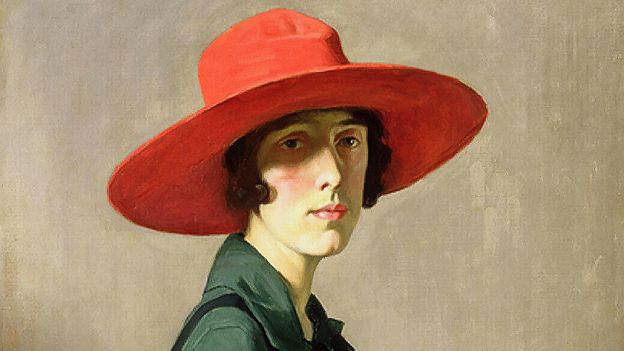And there are different apparent sartorial rebels from Bloomsbury: figures like Woolf and her sister, the painter Vanessa Bell, and her lover Grant, who rejected restrictive clothes in favor of sloppiness, consolation and circulate. Girls like Dora Carrington, the painter, or Sackville-West, who consciously embraced androgyny. Or Woman Ottoline Morrell, who cast her personal unabashed and inimitable type and wore elaborate attire that had been thought-about very retro.
But we nonetheless are inclined to misunderstand issues about them. It’s true, for instance, that Woolf and Bell floated round in waistless, lengthy, flowing garments. However the deeply held concept that these had been all the time in muted tones – mauve and sage, brown and uninteresting blue (assume the murky shade palette in The Hours, or the equally subdued BBC drama Life in Squares) appears to be, not less than partially, due to assumptions which arose from the truth that they had been all the time photographed in black and white.
Reviews from the time recommend that most of the units truly had large colours – simply as you’d anticipate for those who seemed on the work of Bell and Grant or at Charleston, the place they painted each obtainable floor in mustard, tangerine, chartreuse and turquoise. in addition to softer pastels.
It was one thing that actually stood out to Porter in his analysis. “The quantity of instances individuals talked concerning the stunning colours they had been sporting… these vicious clashes,” he recollects. He quotes Bell writing to Grant in 1915, asking for her yellow vest – and one can solely think about what she needed to pair it with. “I will make myself a brand new costume,” she continued, including, “I am afraid you will not just like the costume as a result of will probably be largely purple…I am additionally going to make myself a shiny inexperienced shirt or jacket” As Porter notes, these are “daring fields of shade, similar to her summaries.”
A rejection of previous mores
Bloomsbury was self-consciously revolutionary in a number of creative methods – as early as 1908 Woolf insisted that she needed to do nothing lower than ‘reshape the novel’ – and so it’s tempting to imagine that all of them meant this style. revolution, decided to ‘make it new’ (as fellow modernist Ezra Pound famously stated).

